If you seek a quieter and less crowded alternative to the renowned Huayna Picchu, Huchuy Picchu Mountain is the perfect choice. Situated near Machu Picchu, this breathtaking peak offers a unique experience for adventurers eager to explore the region’s stunning landscapes and rich history.
Renowned for its spectacular panoramic views of the surrounding valleys and the ruins of Machu Picchu, this mountain is an ideal destination for trekking enthusiasts and lovers of Inca history. Suppose you are searching for a less-traveled trail surrounded by the majesty of Peruvian nature and ancient culture. In that case, Huchuy Picchu becomes the perfect retreat for an authentic and unforgettable Andean experience.
Embark on this hidden route and immerse yourself exclusively and serenely in the history and beauty of Machu Picchu. Are you ready for the challenge? Prepare to conquer the heights of Huchuy Picchu Mountain and uncover a unique perspective of this iconic destination!
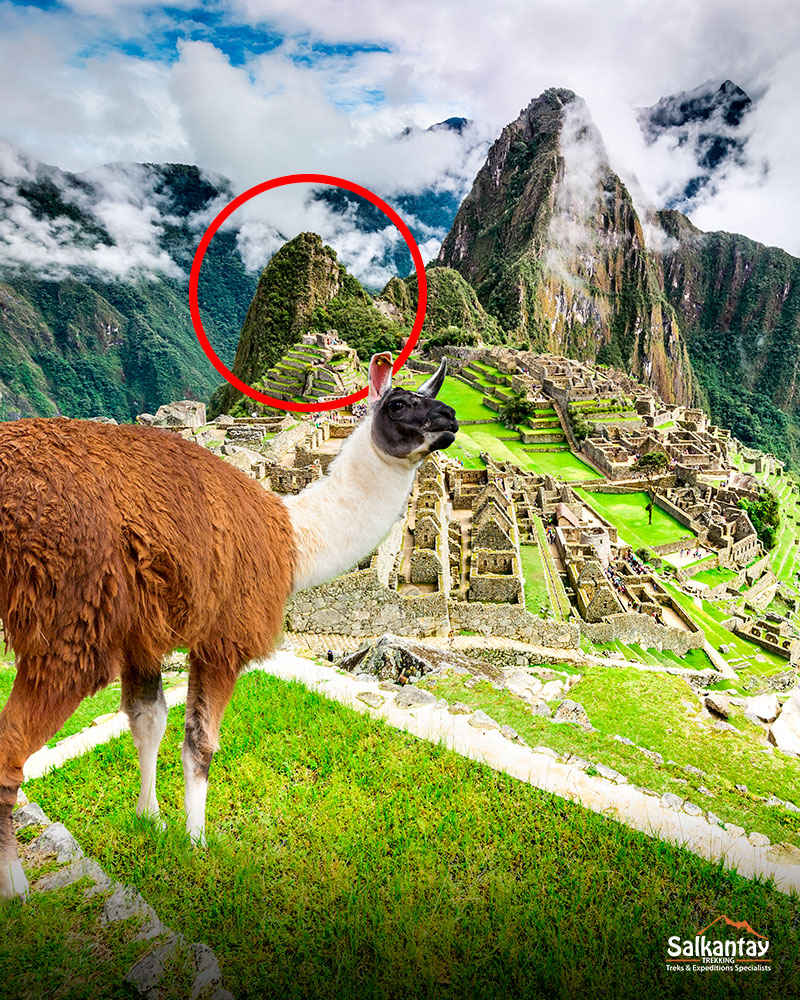
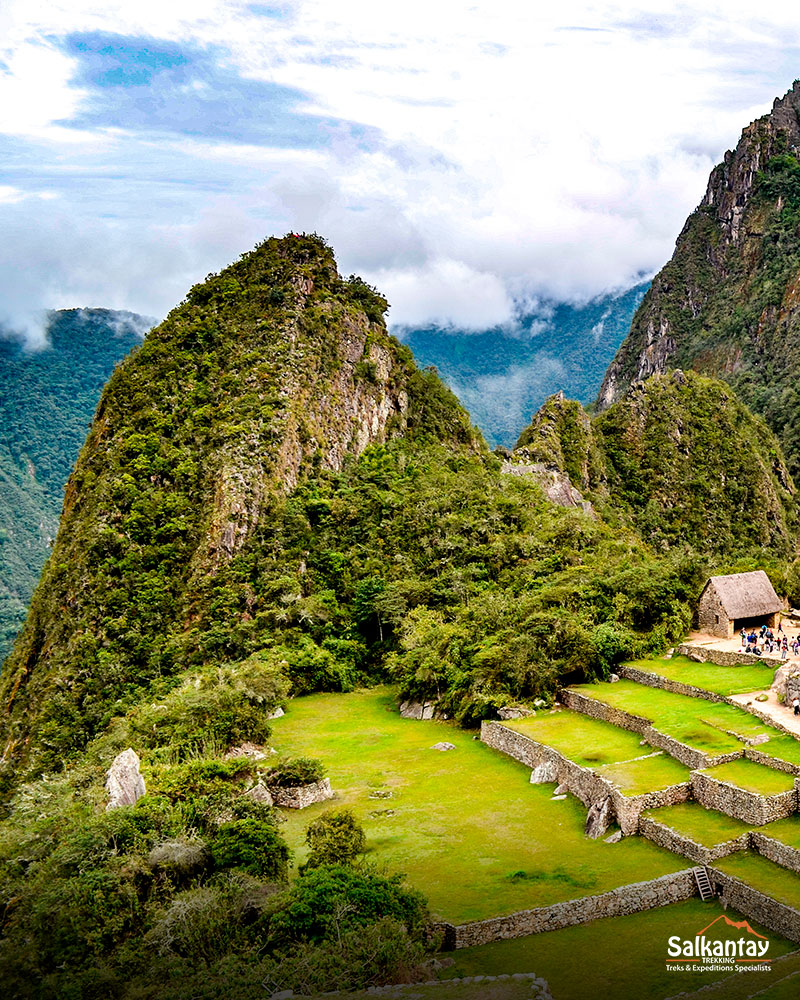
- What is Huchuy Picchu Mountain?
- Why Choose Huchuy Picchu?
- Location and Elevation
- How to Reach Huchuy Picchu Mountain
- Which Ticket Should I Choose for Huchuy Picchu Mountain?
- Entry Schedules
- Best Time to Visit Huchuy Picchu.
- What to find in Huchuy Picchu Mountain?
- How Difficult is Huchuy Picchu Mountain?
- Some Tips
- Frequently Asked Questions
- You Might Also Like
What is Huchuy Picchu Mountain?
Huchuy Picchu Mountain is a minor summit within the archaeological complex of Machu Picchu, right beside the renowned Huayna Picchu Mountain. Though smaller than the surrounding peaks, it stands as an equally fascinating treasure among the mountains of this iconic Peruvian destination.
“Huchuy” means “small” in Quechua, a name distinguishing it from its larger counterparts, such as Huayna Picchu or Machu Picchu Mountain. While it does not reach the same height, Huchuy Picchu offers a significant elevation and rewards visitors with breathtaking views of Machu Picchu and the awe-inspiring landscapes that envelop it.
The trail to Huchuy Picchu winds along ancient pathways and stone staircases, surrounded by lush vegetation and Inca ruins. It offers a journey that seamlessly blends history and nature. It is a serene and magical experience, perfect for those seeking to connect with the essence of the Andes.
To explore this hidden gem, purchase the Circuit 3 ticket for Route 3-D: Huchuypicchu Route. However, keep in mind that this option is only available during the high season on the following dates:
- January 1, 2025
- April 17 to 20, 2025
- June 19 to November 2, 2025
- December 30 to 31, 2025
The reward of enjoying its unique vistas and tranquil atmosphere makes the journey worthwhile!
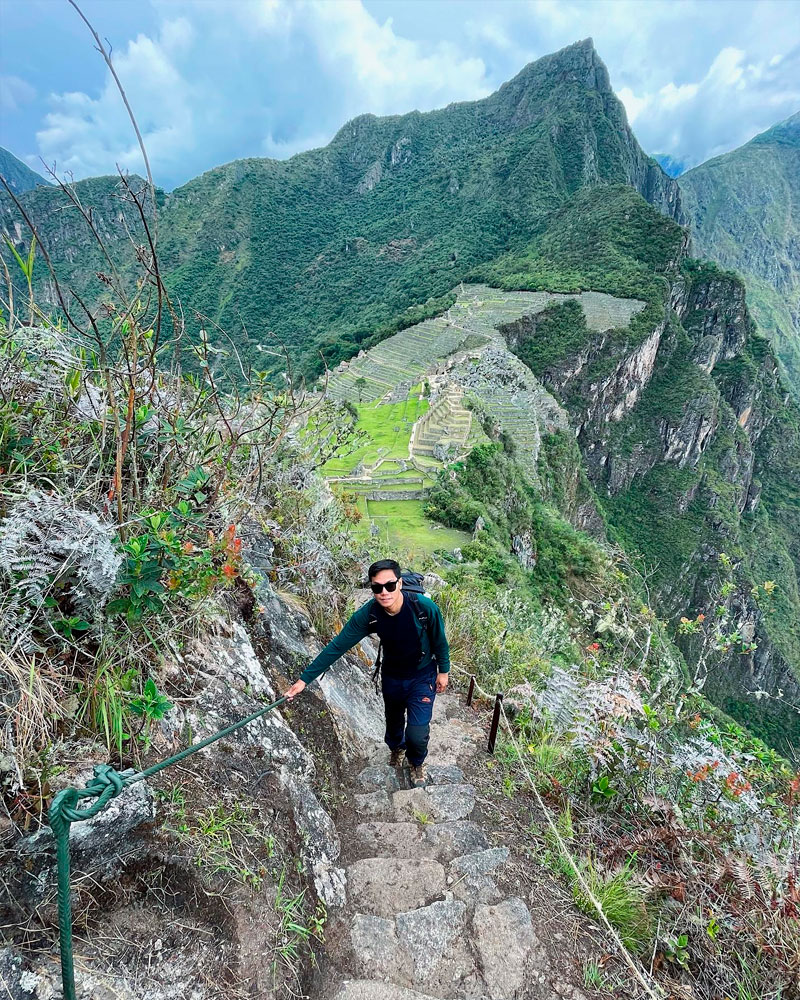

Why Choose Huchuy Picchu?
Huchuy Picchu is the ideal choice for those seeking to explore the natural beauty of the Andean region without undertaking an extremely demanding hike. This trek considered the shortest and most accessible within the Archaeological Park of Machu Picchu, offers a relaxed and rewarding experience perfect for families with young children or travelers with limited hiking experience. The trail primarily consists of well-preserved Inca stone steps. It leads to a summit where you will enjoy unparalleled views of the Machu Picchu citadel and its breathtaking natural landscapes.
With moderate physical effort, this route seamlessly blends history and nature, allowing you to connect with the magic of the Andes in an accessible way. Are you ready to embark on a unique adventure? Secure your ticket and discover the spectacular vistas that Huchuy Picchu has to offer!
Location and Elevation
Huchuy Picchu Mountain sits to the north of the Machu Picchu citadel, next to the iconic Huayna Picchu Mountain, in the province of Urubamba, within the district of Machu Picchu Pueblo, in the Cusco region of Peru. From its summit, which rises to 2,497 meters (8,192 feet) above sea level, you can enjoy breathtaking panoramic views that encompass both Machu Picchu and Huayna Picchu, as well as a visual connection to the Intihuatana, the famous Inca sundial.
Though smaller than its neighboring peaks, Huchuy Picchu offers an accessible and serene option for those seeking a hike with spectacular vistas and profound archaeological significance. Its moderate elevation and well-preserved trail make it ideal for travelers who wish to connect with the majesty of the Andes without intense physical exertion.
How to Reach Huchuy Picchu Mountain
Reaching the magical Huchuy Picchu Mountain entrance is easy. You only need to walk 25 meters from the main entrance of the Machu Picchu citadel. Use the lower entrance, Circuit 3 – Machupicchu Royalty → Route 3-D: Huchuypicchu Route, and prepare to embark on an adventure filled with history and natural beauty.
Huchuy Picchu and its larger counterpart, Huayna Picchu, share the same access point. A few meters after passing the checkpoint, where the controller will verify your ticket to confirm your access to the mountain, you will encounter a fork in the path. Take the trail to the left to begin your journey toward Huchuy Picchu. This less-traveled yet equally captivating route will lead you through stunning landscapes, allowing you to connect with the essence of the Andes in an intimate and exhilarating way.
With a Guided Tour
An organized tour is an excellent choice if you prefer a worry-free adventure. Booking with a specialized agency ensures that all logistical details, such as transfers, schedules, and tickets, are perfectly coordinated. This guided tour allows you to focus solely on enjoying the experience, free from stress or complications.
Additionally, many tours include extra hikes that enable you to explore the magical Huchuy Picchu Mountain and the awe-inspiring archaeological site of Machu Picchu and its surroundings. With an expert guide, you will uncover fascinating stories, intriguing facts, and hidden corners, making your visit an even more enriching experience.
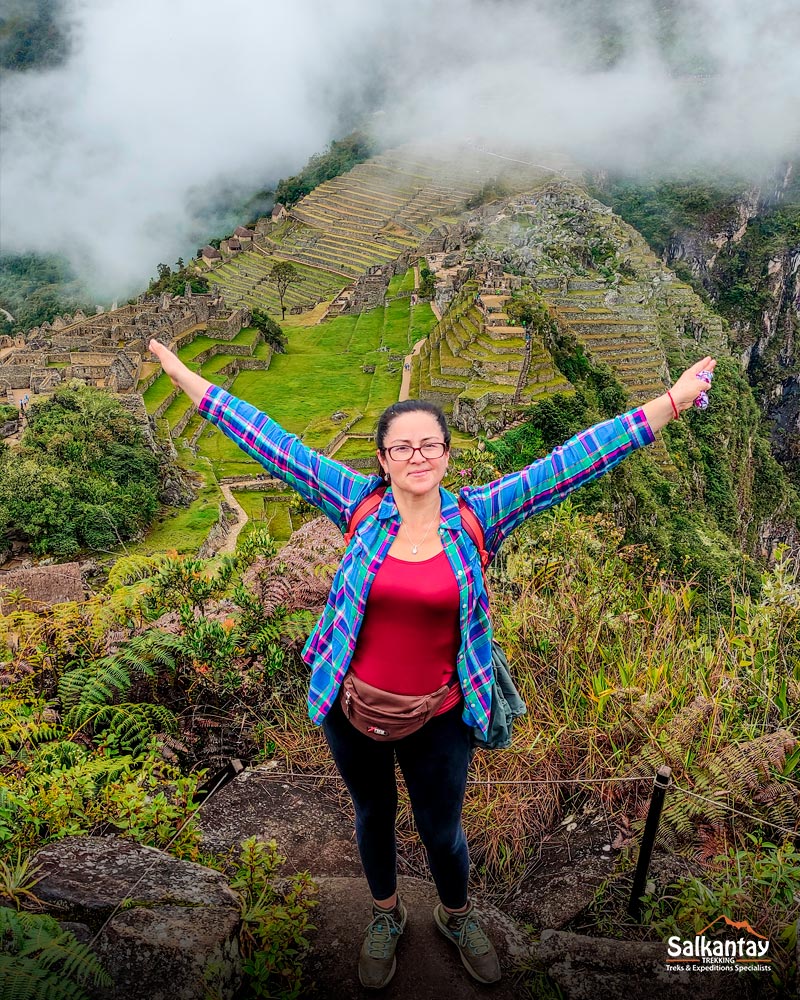
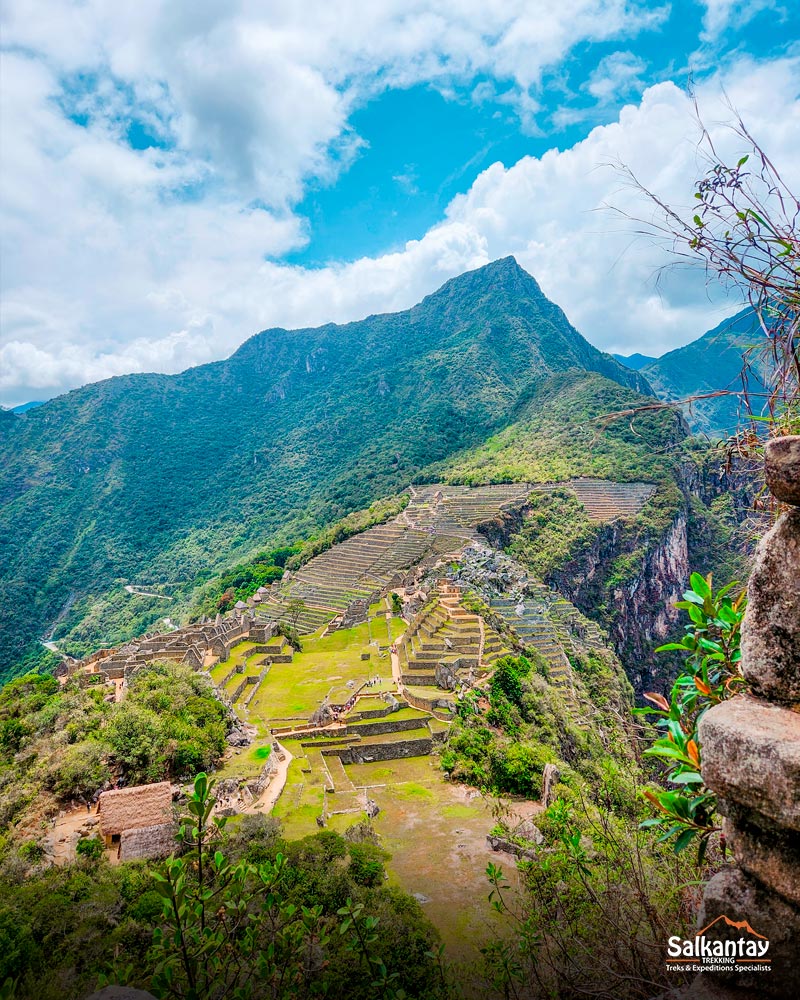
Which Ticket Should I Choose for Huchuy Picchu Mountain?
There are three primary circuits at Machu Picchu, each with routes designed to explore different areas of this breathtaking archaeological site. Knowing which circuit and route will lead you to Huchuy Picchu Mountain is essential to visit this hidden gem.
Understanding which circuit and route will take you to the mountain you wish to explore is essential. If you want to discover the magnificent Huchuy Picchu Mountain, the ticket you must choose is Circuit 3—Machupicchu Realeza, specifically Route 3-D: Huchuypicchu Route.
Would you like to learn more about the other available tickets? Our blog, Tickets to Machu Picchu: Everything you need to know! , provides detailed information about each option, from the circuits and routes to recommendations for selecting the perfect ticket based on your interests.
Ticket Type:
To access Huchuy Picchu Mountain, purchase the ticket corresponding to Circuit 3 – Machupicchu Realeza, specifically Route 3-D: Huchuypicchu Route.
Unlike other routes, this ticket takes you directly to the heart of the Inca citadel of Machu Picchu, offering a unique experience where you can immerse yourself in the impressive architecture and urban planning of the Incas. However, it is essential to note that the classic panoramic view of Machu Picchu is unavailable from this route.
If you are looking to capture the most iconic views of Machu Picchu, we recommend visiting the Huchuy Picchu viewpoint, located at the opposite end of the citadel. Just a 20-minute walk away, this viewpoint provides a unique and less crowded photographic perspective, ideal for a tranquil and contemplative experience. From here, you can admire an alternative yet equally breathtaking view of Machu Picchu and its majestic surroundings.
The maximum allowed time on Huchuy Picchu is 3 hours and 30 minutes, sufficient to explore the area at your own pace, take spectacular photos, and connect with the history and nature of the site. To make the most of your visit, be sure to bring:
- Proper walking shoes
- Sufficient water
- Sunscreen
- Insect repellent
By respecting the established time limits, you will help preserve the site and ensure a positive experience for all visitors.
Route Highlights:
- Lower Platform.
- Upper Platform.
- Dry Moat.
- Sun Temple Viewpoint.
- Granitic Chaos and Temple Plaza.
- Intiwatana (stone sundial) Pyramid.
- Sacred Rock.
- Twelve Windows.
- Eastern Qolqas (Storage Units).
- Water Mirror Complex.
- Condor Temple.
- Pisonay Plaza.
- Archaeological Reserve.
Key Details to Consider:
If you have chosen to explore Huchuy Picchu Mountain, it is essential to keep the following details in mind to ensure a seamless and fulfilling experience:
- Limited Availability
Visits to Huchuy Picchu Mountain are only available during two-time slots each day. Additionally, a maximum of 50 daily spaces are available for online purchase, limiting availability and in great demand.
It is important to note that access to Huchuy Picchu is permitted only during the high season on the following dates:
- January 1, 2025
- April 17 to 20, 2025
- June 19 to November 2, 2025
- December 30 to 31, 2025
- Allowed Time:
Embark on an unforgettable experience with Circuit 3 – Machupicchu Royalty, specifically Route 3-D: Huchuypicchu Route. This tour lasts approximately 3 hours and 30 minutes, allowing you to explore some of the most fascinating corners of Machu Picchu while enjoying spectacular views and a unique connection to Inca history.
Plan your itinerary to make the most of every minute and ensure you don’t miss any details.
Remember!
Bring a printed copy of your ticket for hassle-free access. Physical ticket presentation is mandatory.
Entry Schedules
Purchasing your ticket in advance is crucial, as slots for visiting Huchuy Picchu Mountain sell out quickly due to high demand. Before making your reservation, consider the excursion you wish to undertake, such as a leisurely hike or a more in-depth exploration, so you can fully enjoy this unique experience.
First Schedule (9:00 a.m.)
With entry to the Machu Picchu citadel starting at 9:00 a.m. and access to Huchuy Picchu Mountain between 10:00 and 11:00 a.m., this schedule is ideal for beginning your ascent mid-morning. During this time, you will enjoy cooler weather compared to midday, making the hike more pleasant and less exhausting. Additionally, the morning light is perfect for capturing panoramic photos of Machu Picchu, as the shadows are less pronounced, providing greater clarity and detail to the landscape.
Another significant advantage of this schedule is that you will likely encounter fewer people at the summit, allowing you to enjoy a more tranquil and personal experience away from the crowds.
Second Schedule (11:00 a.m.)
The second slot, with entry to the Machu Picchu citadel starting at 11:00 a.m. and access to Huchuy Picchu Mountain between 12:00 and 1:00 p.m., is ideal for those who wish to take extra time before starting the hike. Although the sun will be higher, this schedule offers interesting views where light and shadows combine to create a unique landscape. It is an excellent option if you prefer to explore other areas of Machu Picchu before beginning your ascent.
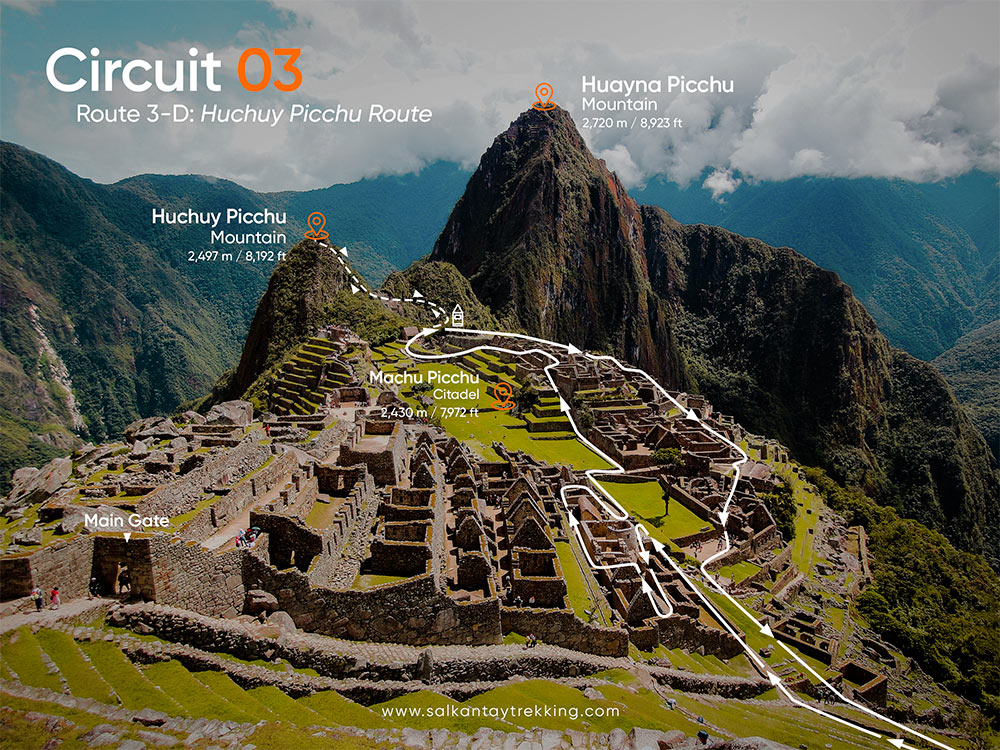
Best Time to Visit Huchuy Picchu.
Visits to Huchuy Picchu Mountain are available only during the high season, which coincides with the dry season in Machu Picchu, spanning from May to October. During this period, the weather conditions are more favorable for the ascent, with fewer rains and greater visibility, allowing you to enjoy this mountain’s spectacular panoramic views.
Due to the high demand during this season, it is essential to book in advance. Tickets to Huchuy Picchu are limited and often sell out quickly. Planning guarantees you a spot and ensures a more enjoyable and secure experience.
What to find in Huchuy Picchu Mountain?
The Trail
The Huchuy Picchu trail is a unique experience that combines history, nature, and breathtaking views. It begins with a gentle slope, initially shared with those heading to Huayna Picchu Mountain. Soon, you will encounter a marked detour with a wooden sign indicating the path to Huchuy Picchu. From there, the ascent continues along centuries-old stone staircases, surrounded by lush vegetation that immerses you in the heart of the Andes.
While most of the trail is broad and accessible, there are narrower sections that add a touch of excitement and adventure to the journey. As you progress, the views become increasingly spectacular. From the summit, you will enjoy a perspective similar to Huayna Picchu’s, with green peaks, cloud forest valleys, and a unique view of Machu Picchu. Although Huchuy Picchu offers a less panoramic vista than its neighboring mountain due to its lower elevation, it remains an incredible option for those seeking a fresh perspective of the landscape and a more tranquil experience.
Recommendations:
- Caution during the rainy season: The stones can become slippery from November to March, so we recommend wearing proper footwear and walking carefully.
- Essential gear: Bring water, sunscreen, insect repellent, and a camera to capture the spectacular views.
- Book in advance: Due to high demand, secure your ticket early to avoid missing out on this unique experience.
Here are some key details:
- Maximum altitude: 2,497 meters above sea level / 8,192 feet
- Elevation gain: 70 meters / 220 feet
- Hiking distance: 1 km / 0.6 miles
- Hiking time: 2 hours (round trip)
- Difficulty level: Easy
Biodiversity: Flora and Fauna.
Huchuy Picchu Mountain is a natural treasure boasting an astonishing diversity of landscapes, flora, and fauna. As you explore its trails, you will immerse yourself in various ecosystems home to unique and fascinating species, many of which are endemic to the region.
- Flora: A Spectacle of Colors and Shapes
- Towering Cedars: These giants of the highlands are iconic to the region and will leave you in awe with their majestic presence.
- Queuñas: Sacred trees to Andean cultures, adding a touch of grandeur to the landscape.
- Lush Ferns: Their leafy fronds create a magical and vibrant atmosphere.
- Endemic Orchids: Discover these delicate, vibrantly colored flowers hidden in the most secluded corners of the mountain.
- Fauna: Wildlife from the Mountain
- Mammals: From small rodents to majestic deer, the mountain is home to an impressive variety of species. Don’t be surprised if you encounter friendly llamas, which add authenticity to the Andean landscape.
- Reptiles: Lizards and snakes adapted to life at high altitudes are part of this unique ecosystem.
- Birds: The Andean cock-of-the-rock, Peru’s national bird, is one of the area’s stars. Its vibrant colors and elegant plumage are a spectacle for those lucky to spot it.
- Endangered Species: With some luck, you might catch a glimpse of the spectacled bear, a symbol of the fight for biodiversity conservation in the region.
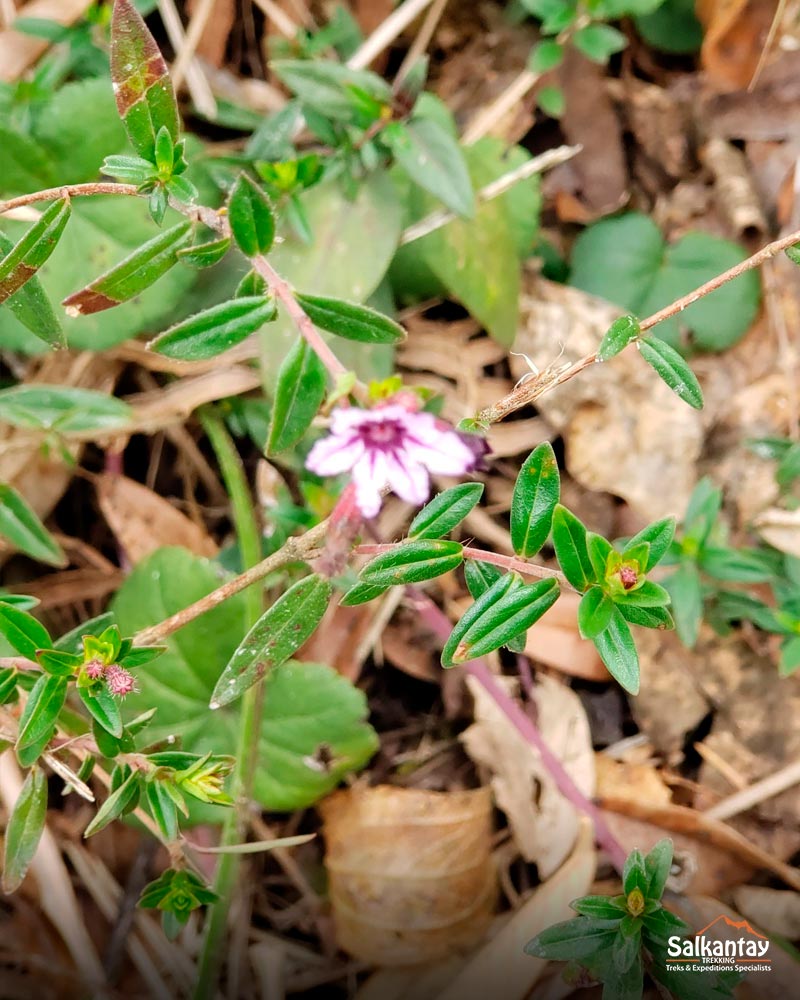
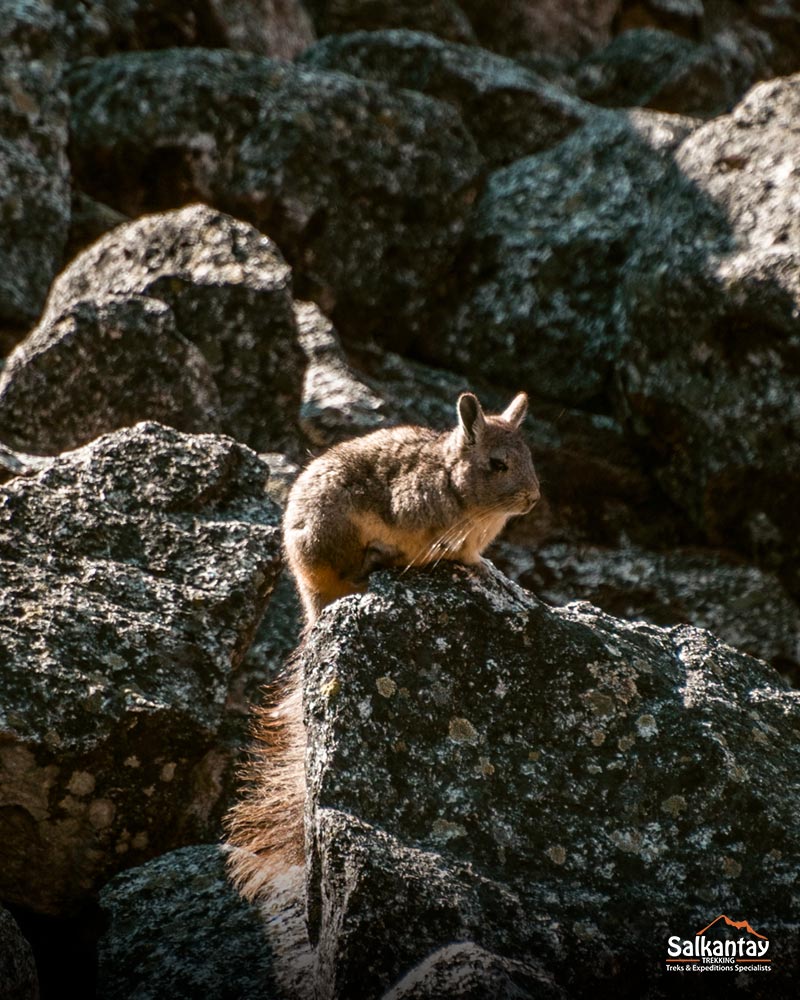
The Landscapes
The landscapes unfolding from Huchuy Picchu Mountain are a true masterpiece of nature. From its summit, you will enjoy a privileged panoramic view of the Machu Picchu archaeological site, where the grandeur of the ancient citadel harmoniously blends with the vastness of the surrounding natural world. This setting, enveloped in lush vegetation, becomes the perfect backdrop for an unforgettable experience.
Along the route, you will be accompanied by the melodious songs of birds, filling the air with their music as you traverse the winding trails. The diversity of flora is another major highlight, with the elegant orchids standing out. Their vibrant colors and delicate fragrances add a magical touch to the landscape. Within the Machu Picchu Historical Sanctuary, more than three hundred varieties of orchids can be found, further enriching visitors’ visual and sensory experience.
How Difficult is Huchuy Picchu Mountain?
The hike to Huchuy Picchu Mountain is accessible to most trekkers, although the difficulty level may vary depending on each person’s physical condition and experience. Overall, the trail is moderately easy, but the final stretch features a steep incline that can be more challenging, especially for those with less hiking experience.
The estimated time to reach the summit is approximately 30 minutes, and the complete round trip can take between 40 minutes and an hour, depending on your pace and the breaks you take to rest or enjoy the scenery. Although it is not a long hike, the variability of the terrain, with uneven and steep sections, can sometimes make the ascent more demanding.
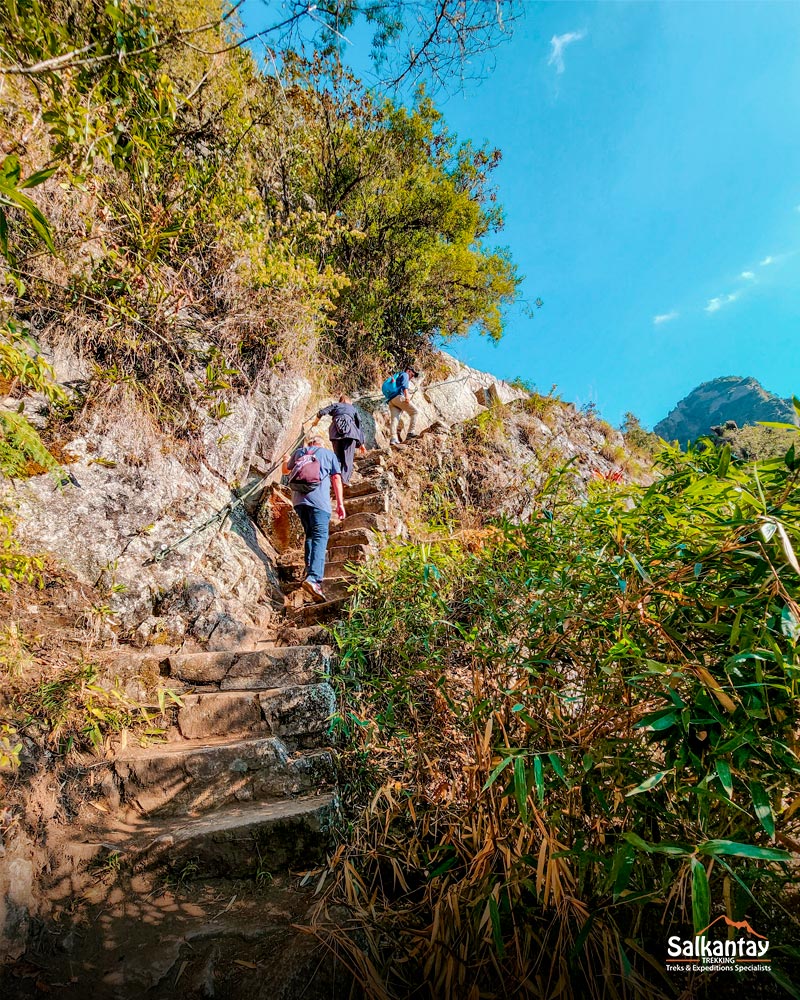
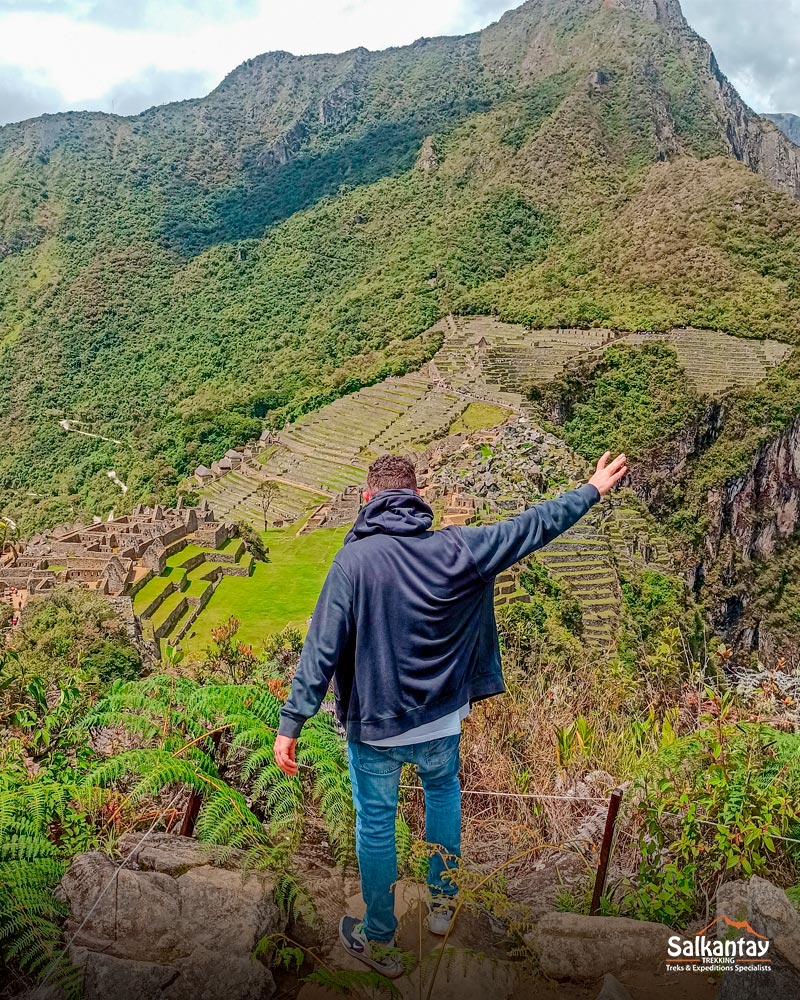
Some Tips
Proper preparation is essential to making the most of your adventure on Huchuy Picchu. Here’s a list of backpack-must-have items.
- Proper hiking footwear
Choose sturdy shoes with good grip and support, as the terrain can be uneven, especially on the steep sections near the summit. - Layered clothing
The Andean climate is unpredictable. Bring multiple layers to adapt to temperature changes, including a waterproof jacket in case of rain. - Small and lightweight backpack
Opt for a compact backpack to carry only the essentials and avoid unnecessary weight. - Water and snacks
Stay hydrated with a reusable water bottle and pack energy-boosting snacks like granola bars or dried fruit. - Electronic devices
Bring a fully charged mobile phone to capture memorable moments and access maps or emergency services. Also, remember a power bank. - Sun protection
Even if temperatures are incredible, the sun at high altitudes can be intense. Use sunscreen, sunglasses, and a hat. - Insect repellent
In some areas, insects can be bothersome, so carry a good repellent to prevent bites.
Proper preparation is key to thoroughly enjoying your adventure on Huchuy Picchu Mountain. To ensure you don’t miss any details, check out our blog post on what to pack for your trip to Peru. With the right tips, you can experience a unique journey amidst the stunning Andean landscapes, filled with comfort, safety, and unforgettable moments.
Huchuy Picchu: Temple of Coca and Guardian of Machu Picchu?
Since ancient times, people have regarded the towering mountains surrounding Machu Picchu as guardians of this Andean sanctuary. Among them, Huchuy Picchu stands discreetly yet powerfully as a sentinel watching the Inca citadel. However, an intriguing hypothesis arises beyond its protective role: was this mountain home to a temple dedicated to the coca leaf?
The coca leaf has been a cornerstone of Andean cosmology. Considered sacred, it alleviated hunger, provided energy to Inca travelers and workers, and served as a link to the divine. It remains an essential ally for those facing the challenges of altitude sickness in the Cusco region.
Recent studies have revealed that coca leaves were cultivated on the terraces of Machu Picchu, reinforcing the theory that this enclave was not only a political and religious center but also a key site for producing this sacred resource. In this context, the possibility of a temple dedicated to coca at the summit of Huchuy Picchu takes on special significance.
Exploring this mountain invites us to delve into Andean spirituality and the secrets this sacred territory holds. The story of Huchuy Picchu continues to raise fascinating questions about the relationship between nature, energy, and the ancestral wisdom of the Incas.
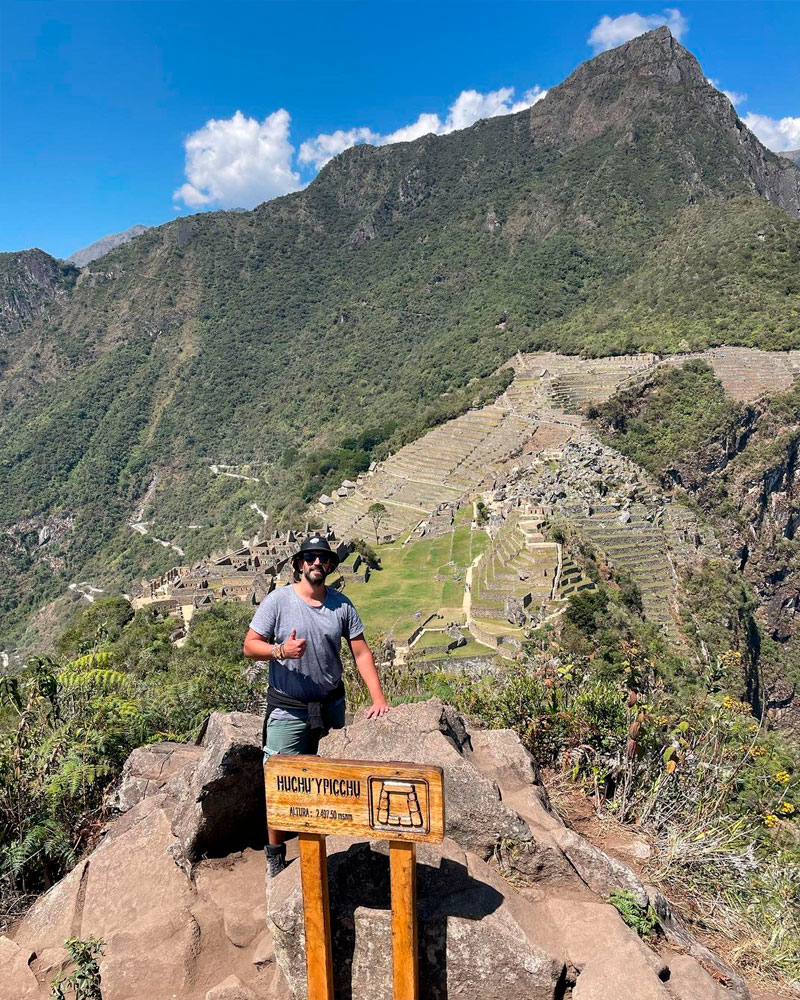
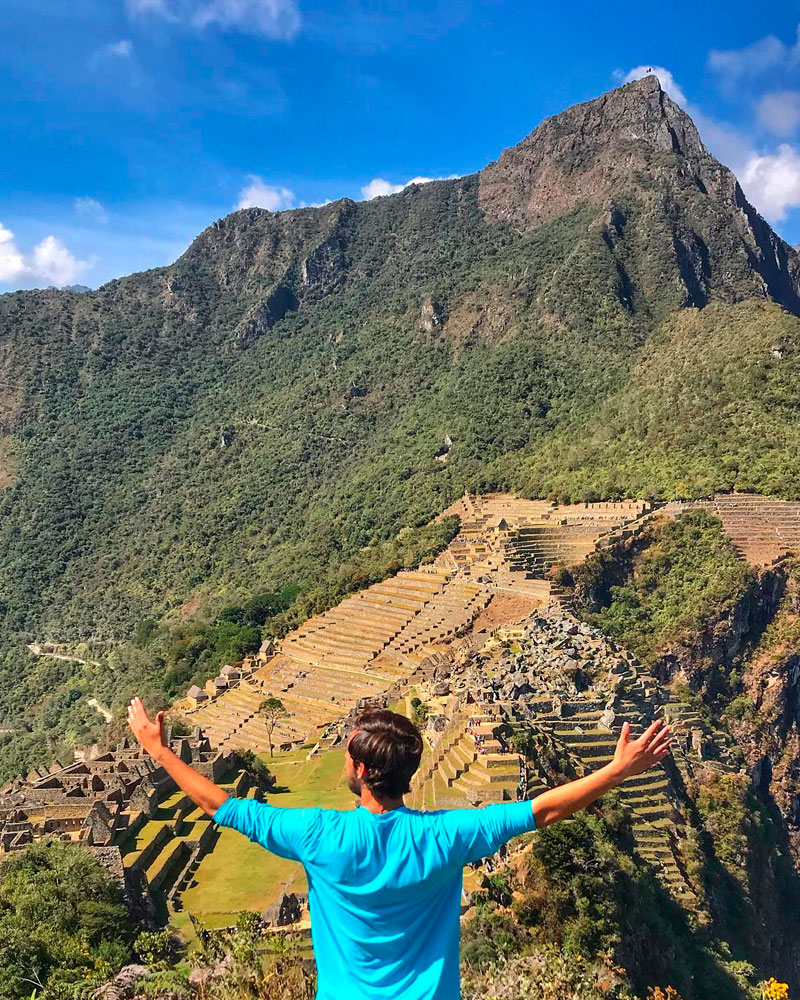
Frequently Asked Questions
- Can I visit Huchuy Picchu at any time of the year?
No, this route is only available during the high season. We recommend checking in advance to secure your visit. - What views does it offer from the summit?
From the summit of Huchuy Picchu, you will enjoy breathtaking panoramic views of Machu Picchu and its surroundings. Along the trail, you can listen to the songs of birds and admire the beauty of native flowers like orchids. - Are there age or physical condition restrictions for climbing the mountain?
Huchuy Picchu is an easy-level hike, making it accessible to people of all ages. However, we recommend this experience for those comfortable walking on uneven terrain. - Can I purchase the ticket for Huchuy Picchu on the same day as my visit to Machu Picchu?
We do not recommend it. Since availability is limited, we advise purchasing your ticket in advance to ensure access. - Huchuy Picchu or Machu Picchu Mountain? Which one to choose?
It depends on what you’re looking for:- Huchuy Picchu: Ideal if you prefer a shorter and easier hike, with fewer visitors and beautiful views.
- Machu Picchu Mountain is perfect for a longer and more challenging hike with panoramic views from a higher altitude.
- Huchuy Picchu or Huayna Picchu?
Both mountains offer unforgettable experiences:- Huayna Picchu: A more demanding route with steep and narrow trails. Ideal for adventurers seeking adrenaline and spectacular views.
- Huchuy Picchu is a more accessible and less challenging alternative. It is perfect if you prefer a more relaxed experience without sacrificing stunning views.
➔ Note: Huchuy Picchu is the best option for vertigo. Huayna Picchu is the right choice if you want a physical challenge and higher views.
- Is Huchuy Picchu worth it?
Absolutely! If you’re looking for a short adventure with stunning landscapes, tranquility, and the chance to capture unique photos of Machu Picchu, this hike is for you.
Don’t miss the opportunity! Secure your ticket in advance and experience the magic of Huchuy Picchu.


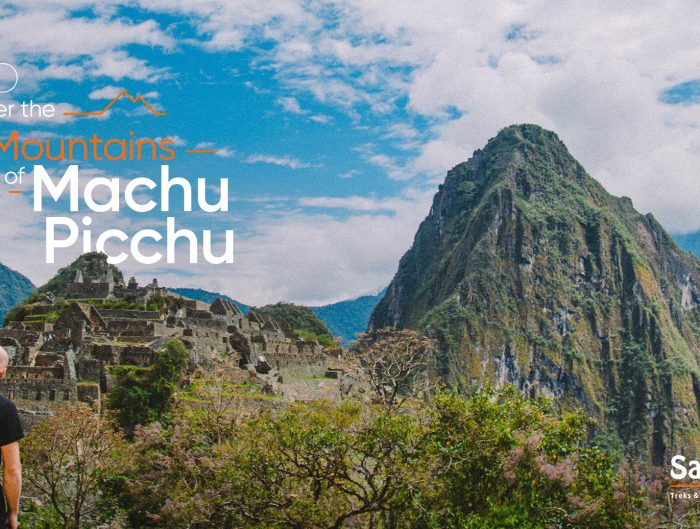
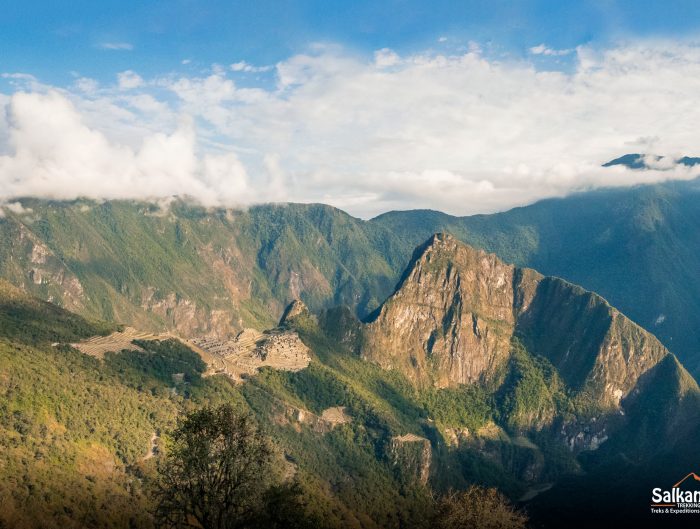
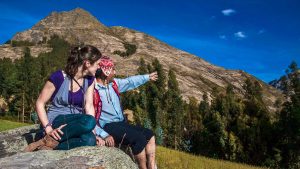
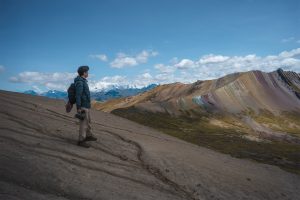
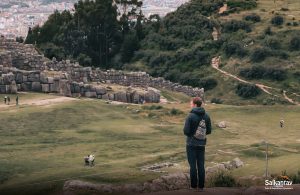
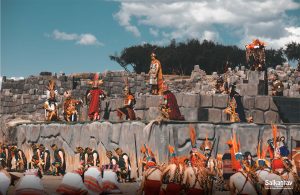
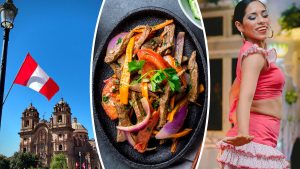
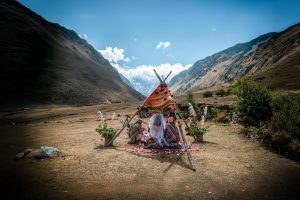


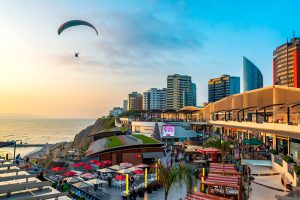

Leave A Reply